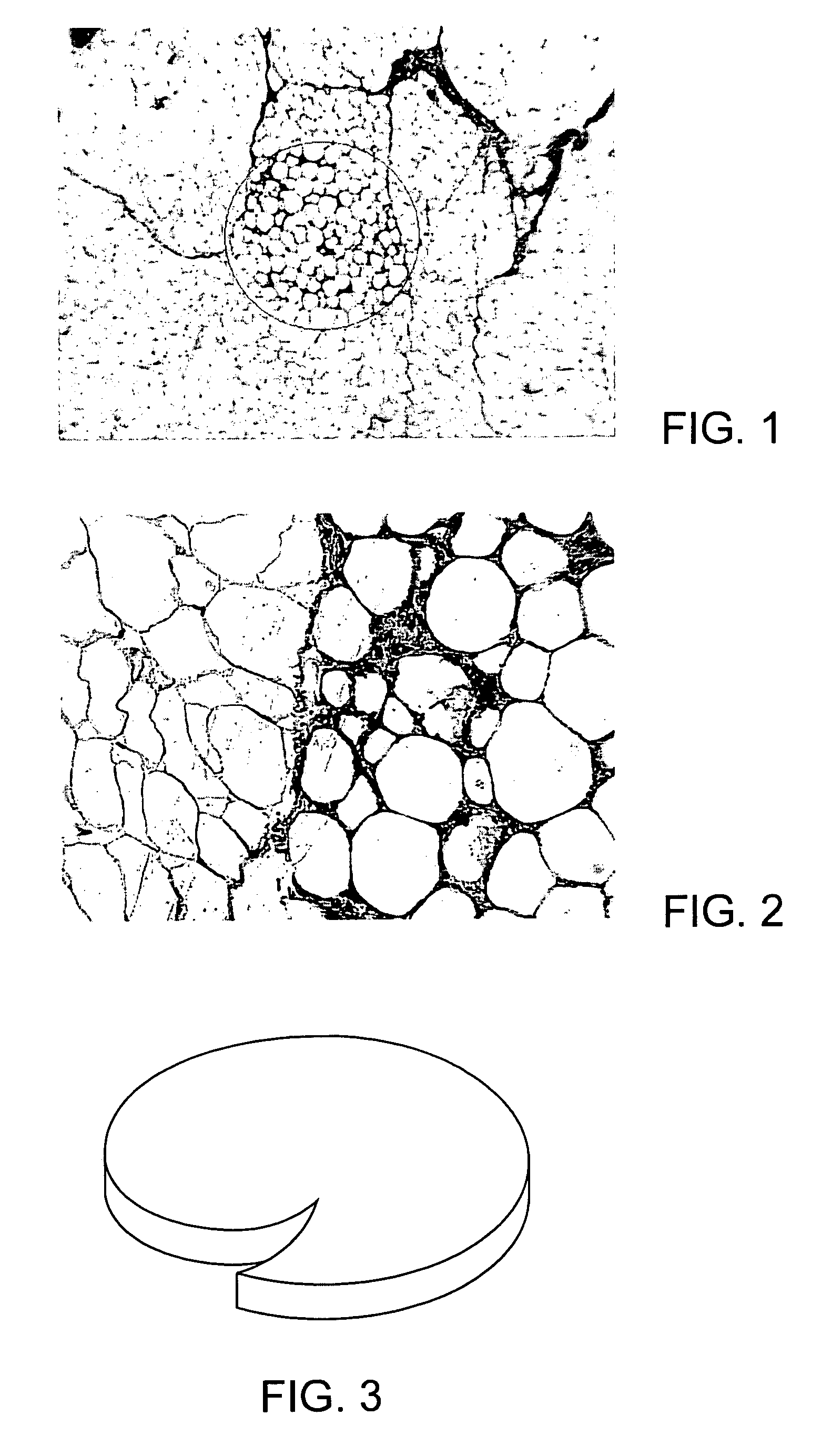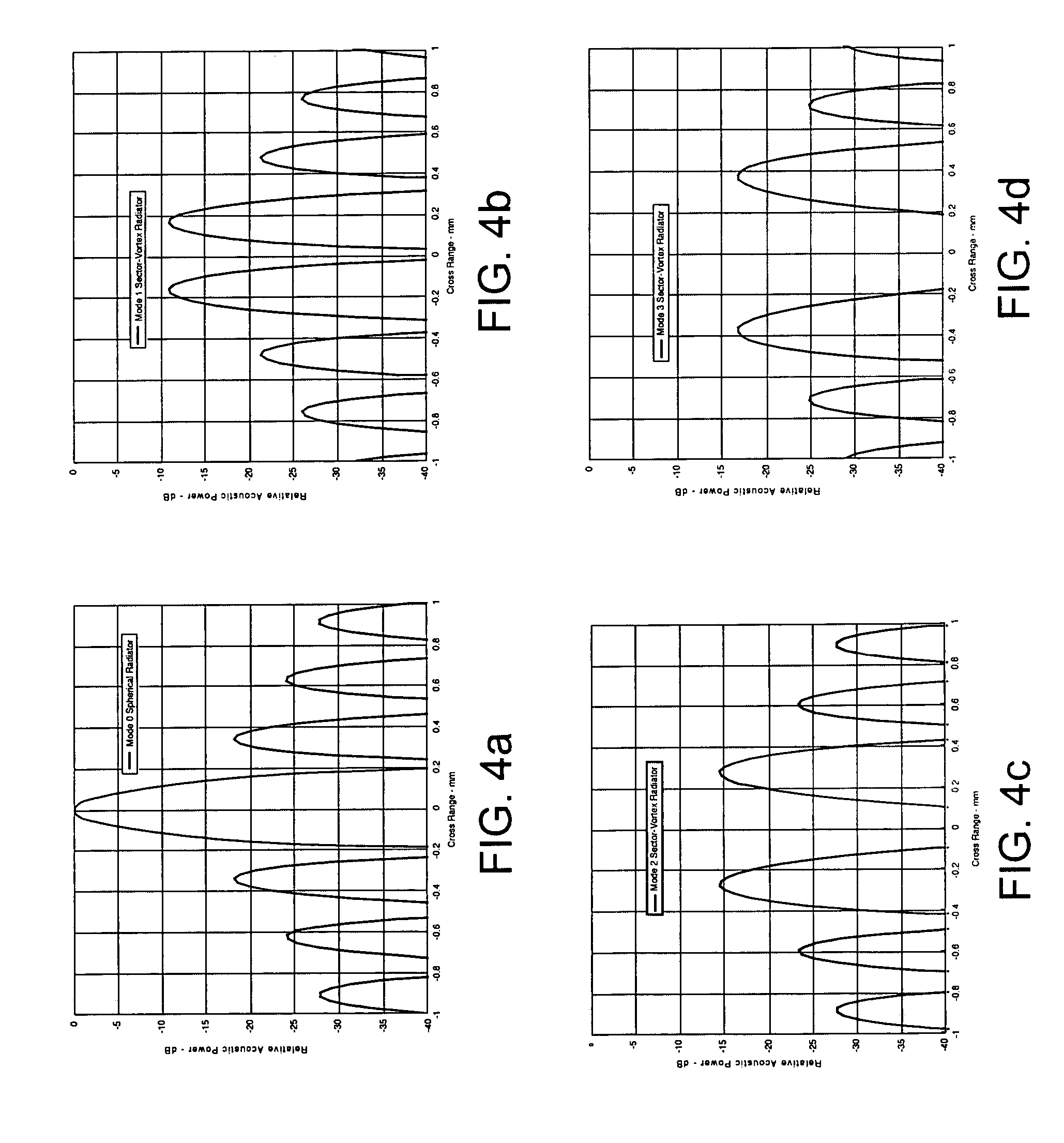Vortex transducer
a vortex transducer and transducer technology, applied in the field of ultrasonic transducers, can solve the problems of inability to visualize the lesions formed, extended time required, and very slow development of hifu commercialization, and achieve the effect of reliable aiming of a vortex transducer, cheap and cost effective manufacturing process
- Summary
- Abstract
- Description
- Claims
- Application Information
AI Technical Summary
Benefits of technology
Problems solved by technology
Method used
Image
Examples
Embodiment Construction
[0038]Described herein is an implementation of a version of the sector-vortex concept. While this concept is known, this disclosure implements the design in a novel manner. In order to avoid the complexities and cost of an electronic beamformer, or the use of a sector-vortex lens with its attendant issues in reliability, acoustic losses and reverberations, and cooling, a continuous vortex lens can be incorporated into the piezoelectric transducer material itself. This can be done by building the transducer out of piezoelectric composite material which can be molded into a vortex lens. This eliminates the need for complex driving electronics and all the issues of an external lens. This design could be instrumental in building cheap, reliable devices that can potentially reduce treatment time by factors of two to eight.
[0039]The present invention implements an applicator design that incorporates the phase shifts mechanically, not electronically. This is mathematically equivalent to le...
PUM
 Login to View More
Login to View More Abstract
Description
Claims
Application Information
 Login to View More
Login to View More - R&D
- Intellectual Property
- Life Sciences
- Materials
- Tech Scout
- Unparalleled Data Quality
- Higher Quality Content
- 60% Fewer Hallucinations
Browse by: Latest US Patents, China's latest patents, Technical Efficacy Thesaurus, Application Domain, Technology Topic, Popular Technical Reports.
© 2025 PatSnap. All rights reserved.Legal|Privacy policy|Modern Slavery Act Transparency Statement|Sitemap|About US| Contact US: help@patsnap.com



